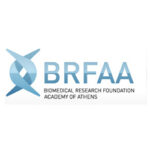BRFAA is responsible for the development of appropriate biochemical assays and surface functionalization techniques towards the fabrication of biosensors for public health and food safety monitoring. More specifically, BRFAA is in charge of the development of a molecular diagnostics assay for the multiplexed detection of SARS-CoV-2 and Influenza A as well as the employment of aptamers for the detection of contaminants in milk.
The Biomedical Research Foundation of the Academy of Athens is the most recent addition to the Life Sciences Research organizations in Greece, which begun its activities in 2004. The founding principle of BRFAA is to host both basic and clinical research, while recently its activities are being expanded in applied science, bringing together advancements in nanotechnology with those in the biomedical field. The Bionanotechnology and Nanochemistry Group that participates in NGM has a strong expertise in the development of biosensors (with a special focus on the use of aptamers for sensing applications) and considerable experience in the characterization of biomolecular interactions and interfacial phenomena for a range of different applications (drug delivery and screening, tissue engineering, biosensors).
The Bionanotechnology and Nanochemistry Group of the Biomedical Research Foundation of the Academy of Athens is leading Demo Case 1, whose goal is to showcase the fabrication of biosensors for public health and food safety monitoring. Towards this goal, BRFAA is developing appropriate molecular diagnostics assays for the multiplexed detection of SARS-CoV-2 and Influenza A, while, for food safety monitoring, the focus is on the use of aptamers for the detection of milk contaminants, Aflatoxin M1 and antibiotics. In parallel, novel surface functionalization methodologies for the chemical modification of the sensor polymer foils and the immobilization of the biorecognition elements are being developed which can be integrated within roll-to-roll processes. In addition, BRFAA is working towards the establishment of a suite of surface and biomolecular interaction characterization techniques (Molecular Dynamics simulations, Circular Dichroism and Fluorescence Polarization Spectroscopy and Quartz Crystal Microbalance measurements) which, collectively, can be offered as a service in the MIH and greatly facilitate the optimization of existing and the development of novel biochemical protocols for a wealth of applications in biosensing, drug delivery and screening and tissue engineering.

